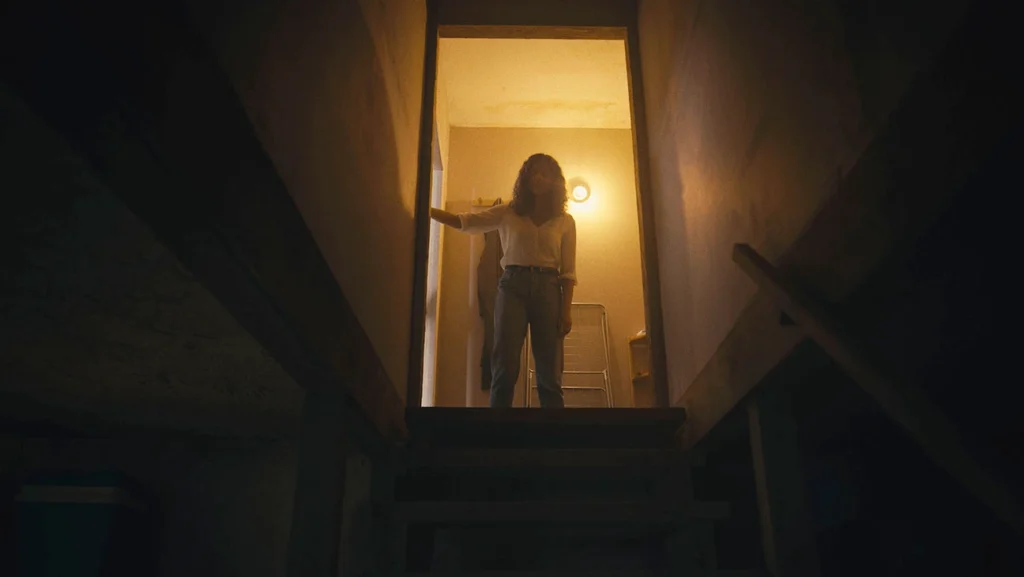Anna Peterson ’25
Staff Writer
TW: SA, Gore
Contains spoilers for Barbarian
As we approach the season for all things spooky, ghoulish, and otherwise grim, I have highly anticipated the horror movie selection at my local Harkins theater. Among popular options like Pearl and Halloween Ends, Barbarian‘s trailer stood out as the championing watch.
The film begins when Tess Marshall (Georgina Campbell) arrives at her Airbnb on 467 Barbary Street. But, oh no! The key to the rental is missing, and in its place is the hunky Keith Toshko (Bill Skarsgård), who has coincidentally also booked the home. Keith invites Tess into the house while the two try to contact the booking agency and plan their respective living spaces. With no luck, Keith suggests that Tess stay the night.
After some light flirtation and a bottle of wine, our main characters finally warm up to each other: Tess divulges a prospective job offer with a filmmaker, and Keith mansplains jazz. At this point, I was hoping for some strangers-to-lovers fanfiction twist. However, the night ends with Tess retreating to her room while Keith roughs it on the couch.
The next day, Tess finishes her interview and returns home to a local man charging at her, begging her to leave. But, as most horror movies go, she, of course, stays. She then intelligently decides it is in her best interest to investigate the basement, the presumably spookiest part of any building.
One hidden door later, Tess discovers an underground tunnel system complete with an HGTV-designed torture room with a blood-soaked bed and film camera. Like any sane person, she immediately exits the situation and finds Keith to explain what she found. However, he kicks into man mode and determines that he must see the torture room himself.
Keith disappears into the darkness, prompting Tess to follow him in the most brutal game of Marco-Polo. When the pair unite, Keith tells her that something bit him. Then, we see “The Mother” erupt from the foreground, smashing Keith’s head into the pavement and effectively killing him. The screen goes black.
A man in a cherry red convertible appears. Screenwriter AJ Gilbride (Justin Long) gets a call from his colleagues regarding their current television project. To his surprise, they alert him that a co-worker has accused him of rape. Within five minutes of screen time, the audience watches as AJ’s life takes a nasty spill with the allegations’ publicization. In a desperate attempt to dodge the heat, he flees to his property in Michigan: 467 Barbary Street.
Met with the belongings of Tess and Keith, he enters the basement to explore the premises. Upon discovering the aforementioned underground tunnel system, he begins to measure the square feet in a comedic attempt to scrape some extra money together. The Mother chases him down and holds him captive with a frightened Tess.
Thus far, the narrative, artistic technicalities, and jump-scares had paralyzed my body in the reclining movie theater chair. After a series of disappointing thrillers, I thought I had finally escaped Hollywood’s lazy attempts at the “scary movie.” This film seems to embody a tasteful combination of satirization and suspense.
Unfortunately, this movie quickly crushed my dreams with a trope seen too often in modern horror. I was content accepting this “Mother” figure as a supernatural being, a creature beyond reasoning. For me, the allusive nature of The Mother made her so much scarier. The audience’s foreign understanding of her presence made us wonder what lurks behind the obvious in our lives. It is the same effect as the monster under the bed.
Instead of preserving this emotion, director Zach Cregger utilizes a backstory that explains away all the lingering questions of the audience. In a flashback scene, Cregger reveals that an atrocious serial killer known as Frank (Richard Brake) once lived in the 467 Barbary Street home. He would target women to attack, sexually assault, and impregnate to produce inbred children. The Mother is one of Frank’s inbred children whose only desire is to be a maternal figure to her captives.
As this background unfolded, I felt a gut-wrenching turn in my stomach, but probably not in the way Cregger intended. This superficial narrative about women’s abuse was unnecessary to funnel an understanding of The Mother’s character. Instead, it retracted my fear of the unknown and replaced it with disgust. With Netflix’s recent Dahmer, it seems apparent that current film trends tend to capitalize on abusive men while ignoring the real-world implications of magnifying this abuse. Additionally, Cregger seems to further this culture with AJ’s somewhat sympathetic storyline as a literal rapist.
When the silver screen flashed off, I felt disappointed that an initially innovative movie was so quickly ruined by a faulty anecdote and a sloppy ending. If you choose to watch Barbarian this spooky season, set up an appointment with your therapist afterward. That’s what I am doing.
Image Source: The Hollywood Reporter



